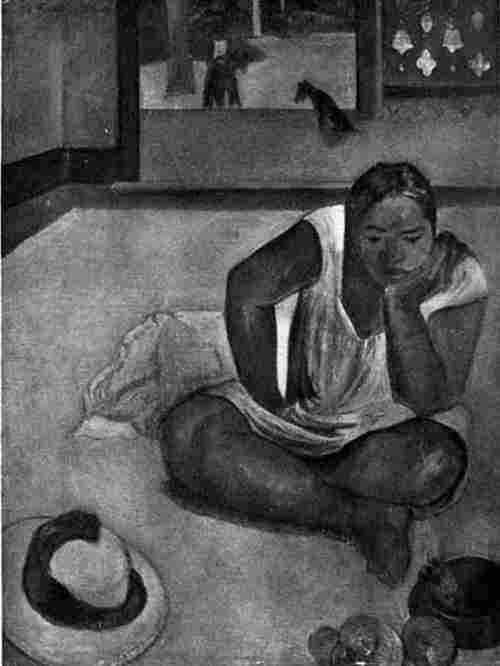
| Courtesy Worcester Art Museum | |
| FEMME ACCROUPIE | GAUGUIN |
Modern Painting
Its Tendency and Meaning
By
Willard Huntington Wright
New York
Dodd, Mead and Company
1922
COPYRIGHT, 1915
BY JOHN LANE COMPANY
THE PLIMPTON PRESS · NORWOOD · MASSACHUSETTS
PRINTED IN THE UNITED STATES OF AMERICA
FOREWORD
THAT beneath all great art there has been a definite animating purpose,a single and profound desire to reach a specific goal, has been butvaguely sensed by the general public and by the great majority ofcritics. And there are, I believe, but very few persons not directly andseriously concerned with the production of pictures, who realise thatthis animating purpose has for its aim the solution of the profoundestproblems of the creative will, that it is rooted deeply in the æstheticconsciousness, and that its evolution marks one of the most complexphases of human psychology. The habit of approaching a work of art fromthe naïf standpoint of one’s personal temperament or taste and ofjudging it haphazardly by its individual appeal, irrespective of itsinherent æsthetic merit, is so strongly implanted in the averagespectator, that any attempt to define the principles of form andorganisation underlying the eternal values of art is looked upon as anact of gratuitous pedantry. But such principles exist, and if we are tojudge works of art accurately and consistently these principles must bemastered. Otherwise we are without a standard, and all our opinions arebut the outgrowth of the chaos of our moods.
Any attempt to democratise art results only in the lowering of the8artistic standard. Art cannot be taught; and a true appreciation of itcannot grow up without a complete understanding of the æsthetic lawsgoverning it. Those qualities in painting by which it is ordinarilyjudged are for the most part irrelevancies from the standpoint of pureæsthetics. They have as little to do with a picture’s infixed greatnessas the punctuation in Faust or the words of the Hymn to Joy in the NinthSymphony. Small wonder that modern art has become a copiousfountain-head of abuse and laughter; for modern art tends toward theelimination of all those accretions so beloved by thegeneral—literature, drama, sentiment, symbolism, anecdote, prettinessand photographic realism.
This book inquires first into the function and psychology of all greatart, and endeavours to define those elements which make for genuineworth in painting. Next it attempts to explain both the basic andsuperficial differences between “ancient” and “modern” art and to pointout, as minutely as space will permit, the superiority of the newmethods over the old. By this exposition an effort is made to indicatethe raison d’être of the modern procedure. After that, modern paintersare taken up in the order of their importance to the evolution ofpainting during the last hundred years. I have tried to answer thefollowing questions: What men and movements mark the milestones in thedevelopment of the new idea? What have been the motivating forces ofeac